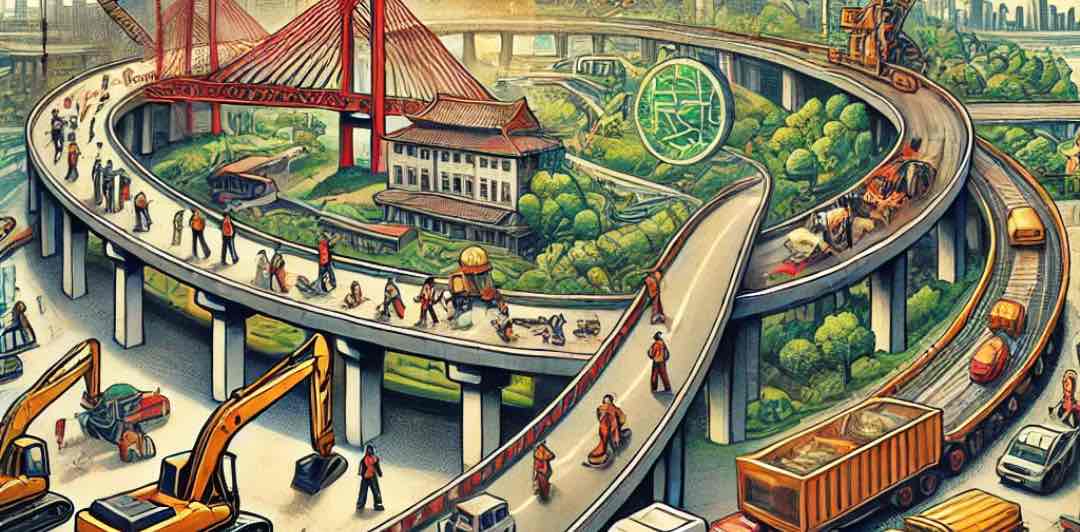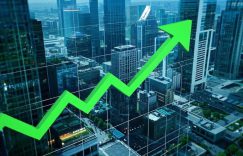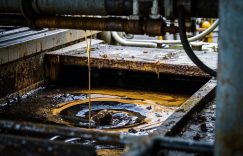
I promised a classmate named Hans that I would have a special section to talk about the new era of big maintenance. Today I will fulfill my promise and talk about this issue. Simply put, we are facing a crucial trend, that is, China is shifting from the “big infrastructure era” to the “big maintenance era”.
Don’t underestimate these two words. This is a turning point in the era and a huge change in the development model. The impact behind it is naturally very huge. It involves changes in countless industries and personal wealth-making models. Next, we will deeply analyze what personal impact this change will bring to you.
From the “big infrastructure era” to the “big maintenance era”
Without further ado, let’s get to the point.
We call the past 20 years in China the era of “big infrastructure”. A series of urban infrastructure such as real estate, roads, highways, railways, and bridges have sprung up. According to official statistics, in 20 years, we have built 600 million houses, 5.43 million kilometers of roads, 160,000 kilometers of railways, 11,500 kilometers of subways, and countless municipal facilities, highways, ports, pipeline facilities, etc.
If you have no idea about these numbers, you can understand it this way: the infrastructure projects built by China in 20 years have exceeded the total infrastructure projects built by Western countries in 200 years. This extremely large scale and volume, who can not say that “the infrastructure maniac is well-deserved”.
So, why do we say that we are turning from the “big infrastructure era” to the “big maintenance era”?
Because many infrastructures have gradually appeared aging, damage and other problems after years of continuous use, creating safety hazards. For example, in the first half of 2024, I believe you still remember the collapse of Meizhou Expressway. According to the results of the official investigation, the cause of the accident was not the quality of the project, but the long-term use of the expressway. The huge wear and tear, and the long-term lack of maintenance.
In a word, I think that the aging of infrastructure will come before the aging of the population.
For example, the service life of high-speed rail and railway-related equipment is generally about 10 years. For example, the peak period for bidding for EMUs was from 2013 to 2017, which means that in the next few years from 2023 to 2027, many EMU equipment will be approaching the end of their design service life and will usher in a stage of large-scale maintenance and renewal.
For example, in the field of highways, the design life of my country’s high-grade highway pavement is generally 15 to 20 years. According to statistics, in 2021, among the high-grade highways of Class II and above in the country, the proportion of roads with an age of more than 15 years will exceed 50%, and the cost of later maintenance will become increasingly larger.
In addition, there are our residential communities. Now, residential communities with a residential age of more than 20 years, especially high-rise communities, have begun to experience wall shedding, water seepage and leakage, and circuit pipe network wear and tear.
In short, including residential buildings, railways, highways, bridges, and ports, in the next ten years, we will enter the concentrated aging period of these infrastructures.
Three important impacts
What impact will this development trend have on all of us?
The first impact is safety risks.
In the future, it is inevitable that the safety hazards and risks of various buildings will become higher. Whether it is road collapse, pipeline leakage, water leakage, or disrepair of venues, these problems may significantly increase the incidence of safety accidents and emergencies. Therefore, we may have to face the reality of frequent accidents in the future, and we must be more careful consciously.
High-rise and super-high-rise residential buildings will be high-incidence areas for such safety hazards. For example, the super-high-rise explosion incident in a residential building in Shenzhen in December 24 sounded a wake-up call for us. The maintenance cost of this kind of super-high-rise residential building is extremely high. The safety risks of circuits, pipe networks, walls, and structures will be exposed faster as the structure of the house ages, and the rescue is very difficult.
So here I have to remind you to prepare for a rainy day. The aging house should be repaired as soon as possible. If you live in a super-high-rise or top floor, if you can afford it, it is recommended to change houses as soon as possible, because the asset value of these high-rise residential buildings may become lower and lower in the future.
The second impact of the arrival of the “big maintenance era” is price increases.
What specific things will increase in price?
For example, as the degree of housing aging further deepens, various expenses such as property fees, maintenance fees, and insurance premiums will rise. The increase is not only related to houses, but also related to infrastructure. There will be a trend of price increases.
Another example is high-speed rail. You must know that high-speed rail is a high-debt and low-profit industry. The national railway has a debt of 6.3 trillion yuan, and the annual interest expenditure will exceed 200 billion yuan. Among the high-speed railways that have been built, only 6 lines can achieve profitability, and the remaining high-speed railways are all operating at a loss.
Therefore, the national railway has been trying to find a solution: for example, freight subsidizes passenger transport. In recent years, a lot of ordinary railways and ordinary express trains have been cancelled, and the railway capacity has been given to freight, and the money earned from freight is used to subsidize passenger transport. Another example is ticket price increases. In 2024, the National Railway Group has already raised the price of high-speed rail once. The reason is that the high-speed rail EMUs are now gradually entering the aging stage, and the maintenance cost is too high and too expensive. The only way to let consumers share this part of the cost is to increase ticket prices.
According to my analysis, this price increase is essentially a subsidy from the rich to the poor. Why do you say that? The areas with price increases are the most economically developed and most populated areas; while those remote areas with less traffic have not seen price increases, so the essence of this price increase is that the rich in economically developed areas subsidize the poor in economically backward areas.
In addition to the increase in high-speed rail ticket prices, other infrastructure-related expenses, including highway tolls, expressway fees, port berthing fees, etc., may also increase. The same reason is behind it, because these large infrastructures must be frequently overhauled and maintained, and the money for maintenance is often difficult to charge, so either fiscal subsidies or price increases are chosen. Local finances are not rich now, so there is probably only one option left, which is to increase prices.
To give another example, a recent obvious trend is to extend the highway toll period. The central document clearly proposed at the end of 2024 that it is necessary to promote the reform of the highway toll system and maintenance system and promote the optimization of toll highway policies. Subsequently, the Ministry of Transport held the 2025 National Transportation Work Conference, clearly listed major reforms such as the optimization of toll highway policies as key tasks for 2025, and directly stated that it would speed up the legislative process of the “Toll Highway Management Regulations.” The purpose behind this meeting is to extend the highway toll period, otherwise the subsequent maintenance will really be unaffordable.
You may be worried when you hear this. The situation in the “big maintenance era” seems not optimistic? Then let’s look at the last impact-opportunity.
After all, the first step to turning to the big maintenance era is that someone has to do the maintenance. I judge that in the next ten to twenty years, we will fully enter the post-infrastructure operation stage with “maintenance” as the main theme. For these massive infrastructure projects, the subsequent annual maintenance costs are almost in trillions of units, which is a very large incremental market.
Specifically, which industries will benefit first?
First, it is good for the maintenance industry. Whether it is roads, railways or old houses, they all need regular large-scale maintenance to ensure the extension of their service life. Among them, the maintenance industry that directly faces these aging infrastructure is the closest to the water.
Secondly, it is good for the parts and materials industry. No matter how large the scale of maintenance is, maintenance requires parts and materials, whether it is alloys, iron parts, die-castings or coatings, films, and exterior paint materials, they are all “just needed” raw materials for maintenance and repair, which will also bring huge demand and opportunities.
In addition, with the renewal of cities and infrastructure, a new round of wealth creation cycle will be entered. At present, the central government has carried out urban renewal work, from the renovation of old communities, the renewal of municipal facilities to the integration of factories and networks, and the replacement of water, coal, heat and fuel pipelines. The “new infrastructure” of large-scale renewal and transformation based on cities will also bring about a large-scale wealth outburst. Therefore, I said that the era of large-scale maintenance is not only a huge change in the economic structure, but also a huge change in wealth, and there is an opportunity to make a group of people rich in batches.




